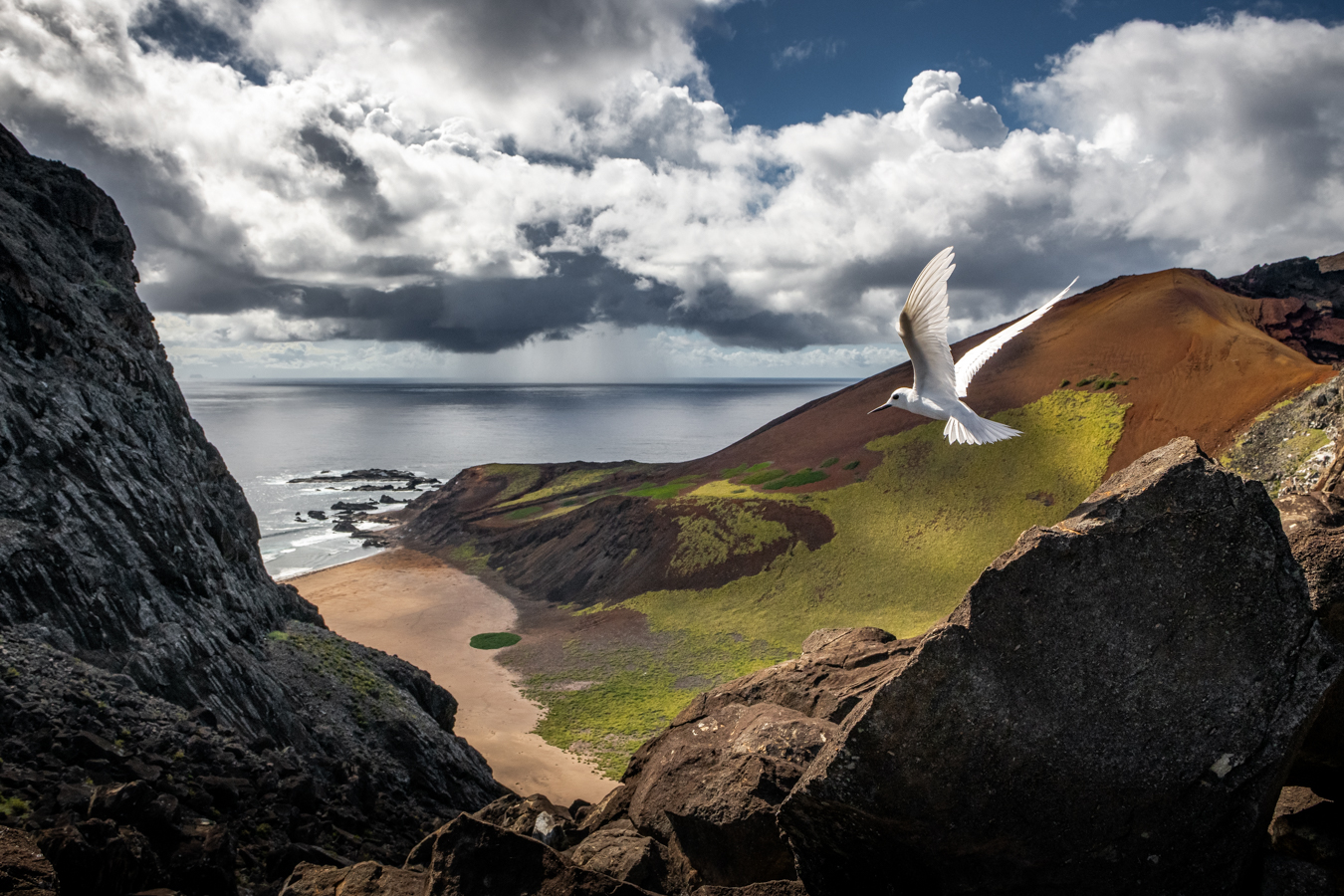Seconded By: Sylvia Laudien-Meo
A Brazilian Navy expedition introduces us to an intriguing species of yellow land crab, 𝘑𝘰𝘩𝘯𝘨𝘢𝘳𝘵𝘩𝘪𝘢 𝘭𝘢𝘨𝘰𝘴𝘵𝘰𝘮𝘢, commonly known as John. Named in honor of John Garth, a distinguished American naturalist, this terrestrial crab inhabits only four oceanic islands, three located in Brazil and one off the coast of Africa, which falls under British territory. Among these islands, one stands out as the last refuge where this species thrives: the Trindade island, situated 1200km from the Brazilian coast. Navigating the high seas of the Atlantic Ocean for four days is necessary to reach this remote location. Protected by the Brazilian Navy and inaccessible to civilians, the area hosts a scientific station for researchers, providing an environment with minimal anthropogenic influence and optimal conditions for the Johns.
These terrestrial crabs are dispersed across the island, from the beaches where they mate and migrate to the mountaintops reaching heights of up to 600m, which serve as the primary habitat for juveniles. During their migration to the beaches for mating, John crabs, despite being predominantly herbivorous, take advantage of Trindade’s status as Brazil’s largest green sea turtle nesting site, constantly feeding on the hatchlings.
Despite significant progress in research on this species in recent years, and despite being considered endangered for two decades in Brazil, little is still known about the biology and ecology of the yellow crab. Studies are still underway to better understand the life history of this species and its genetic connectivity. However, a challenge that remains is assessing whether the yellow crab is more threatened on any of these islands and requires more urgent conservation actions.
These animals are studied by São Paulo State University (UNESP) with the Brazilian Navy’s support, guided by the PROTRINDADE project. This collaboration aims to deepen our understanding of 𝘑𝘰𝘩𝘯𝘨𝘢𝘳𝘵𝘩𝘪𝘢 𝘭𝘢𝘨𝘰𝘴𝘵𝘰𝘮𝘢, shedding light on its ecological role and aiding in conservation efforts to protect its fragile populations across their limited range.
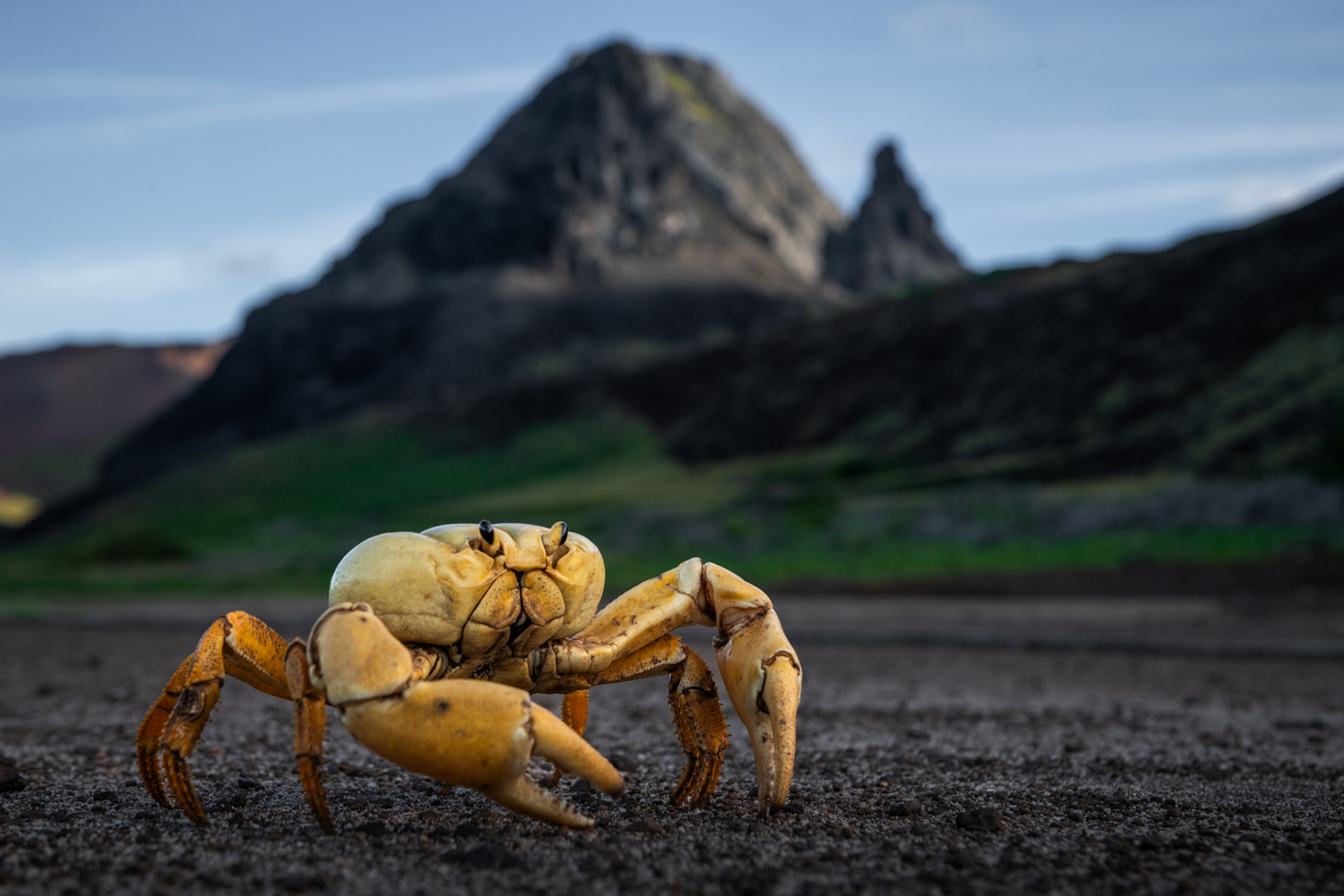
A Crab Named John
This yellow land crab was named in honor of John Garth, a distinguished American naturalist. Johngarthia lagostoma exists on four oceanic islands, three in Brazil and one near Africa, which is part of England.
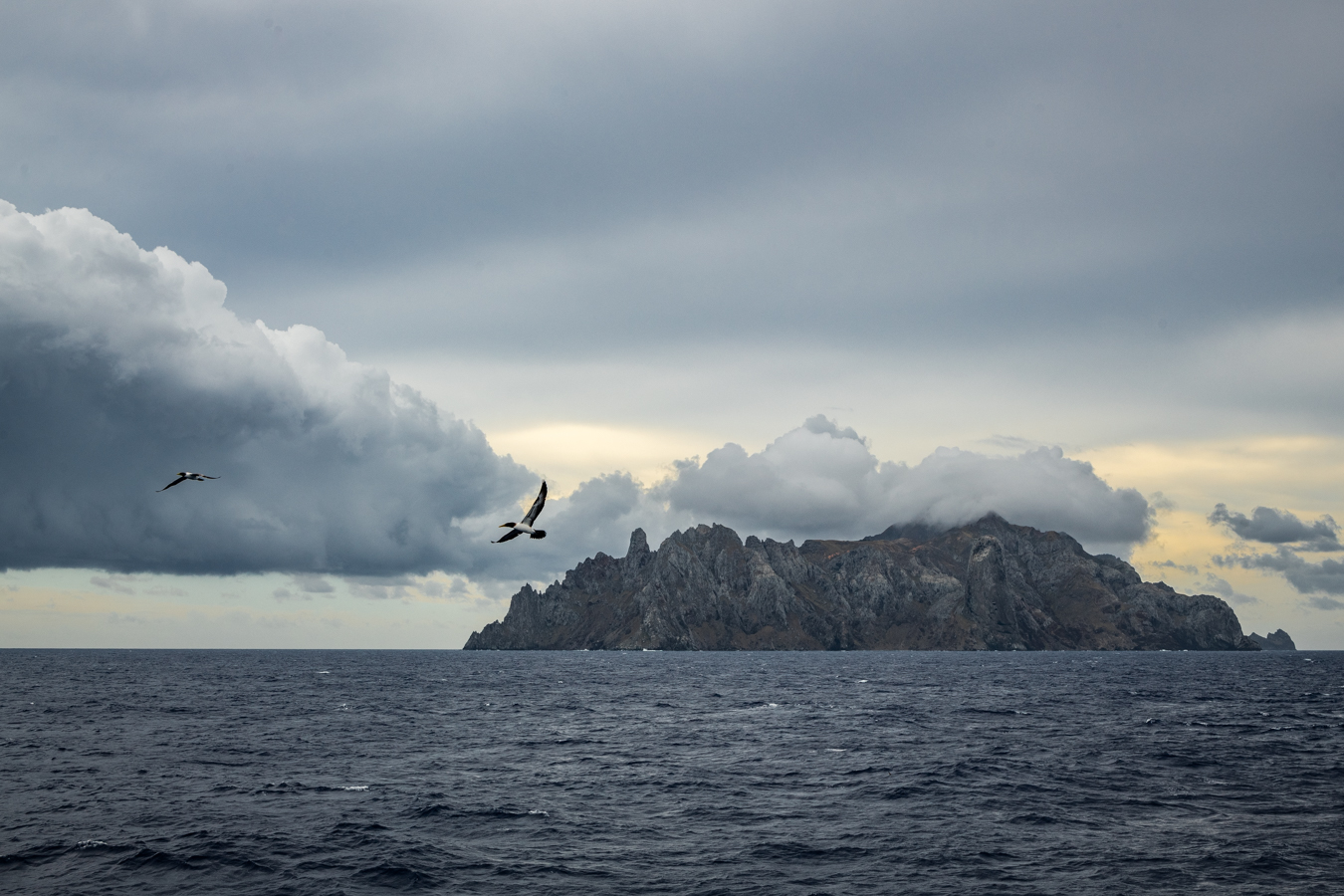
The Last Stronghold
Trindade Island emerges as the ship finally catches sight of it after 4 days of journey across the South Atlantic. This island is a testament to volcanic activity that threw this land out of the sea three million years ago.
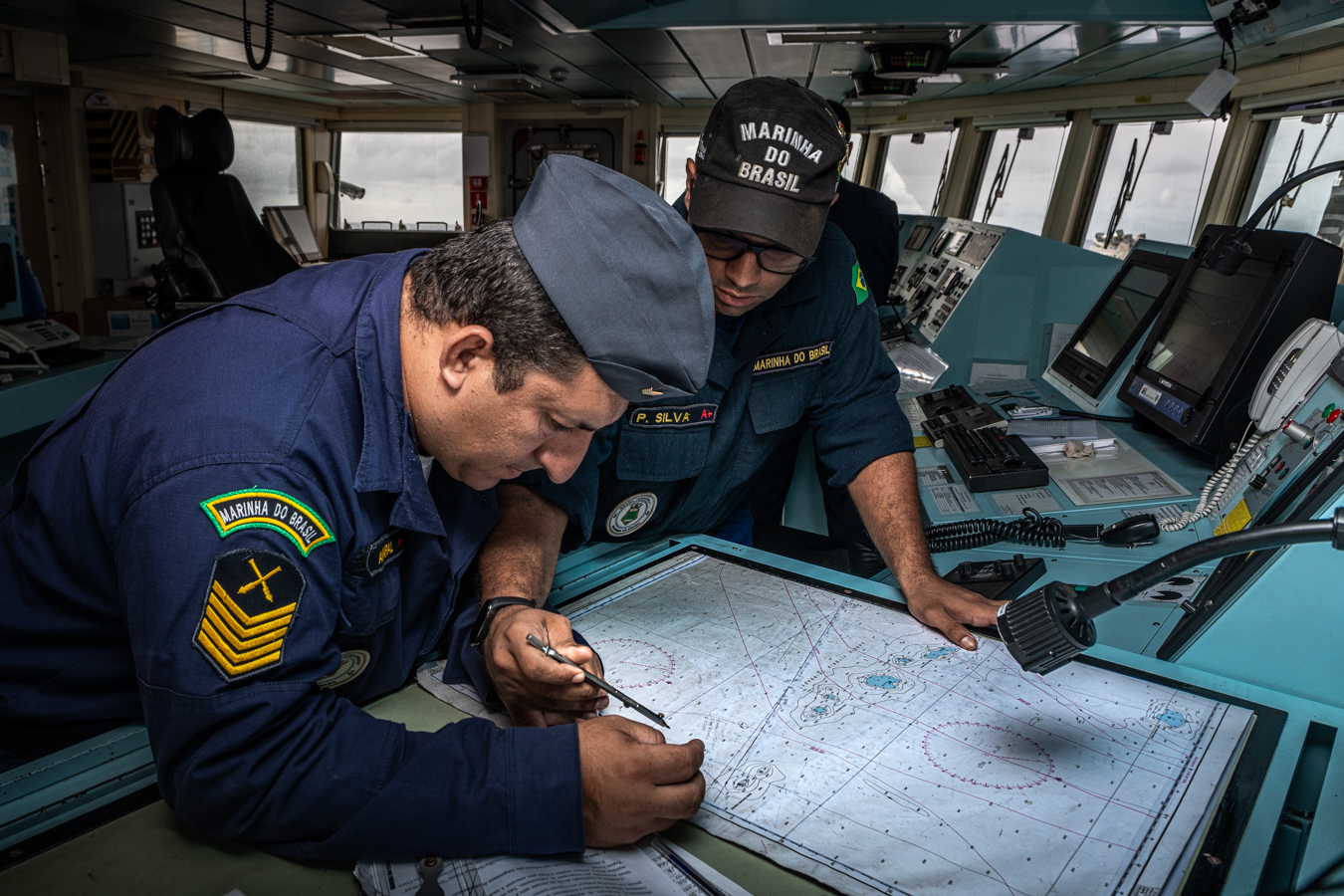
Charting the Course
On board the Ocean Patrol Ship – “Amazonas,” of the Brazilian Navy, sailors, despite having modern navigation resources, still navigate and adjust course using nautical charts during the approximately 1200km journey to Trindade Island.
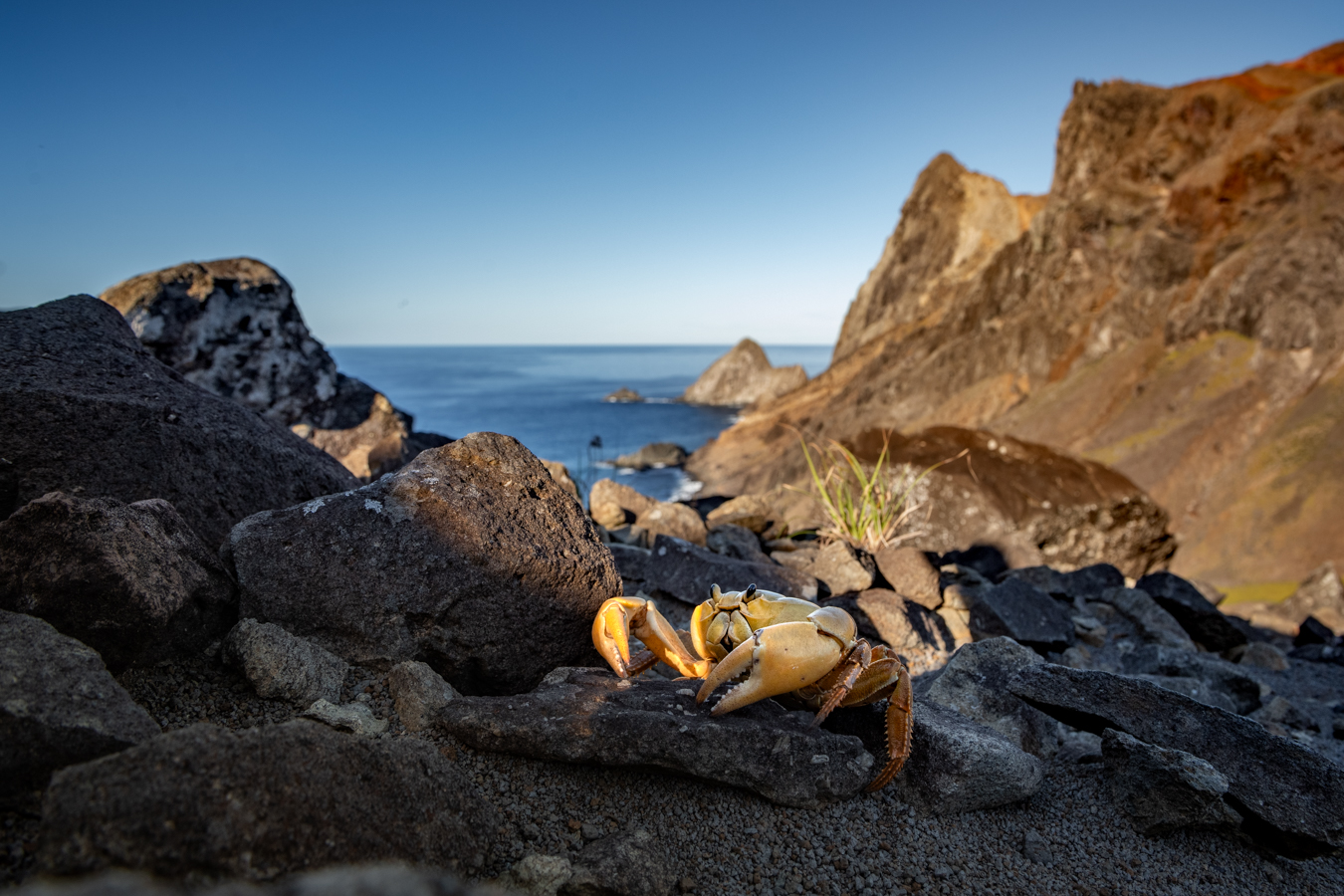
High in the Mountains
The yellow land crab is present throughout the island, from the beaches to the highest peaks, including those over 600m high. Prince Hill is one of the most important plateaus on the island and harbors a significant population of them
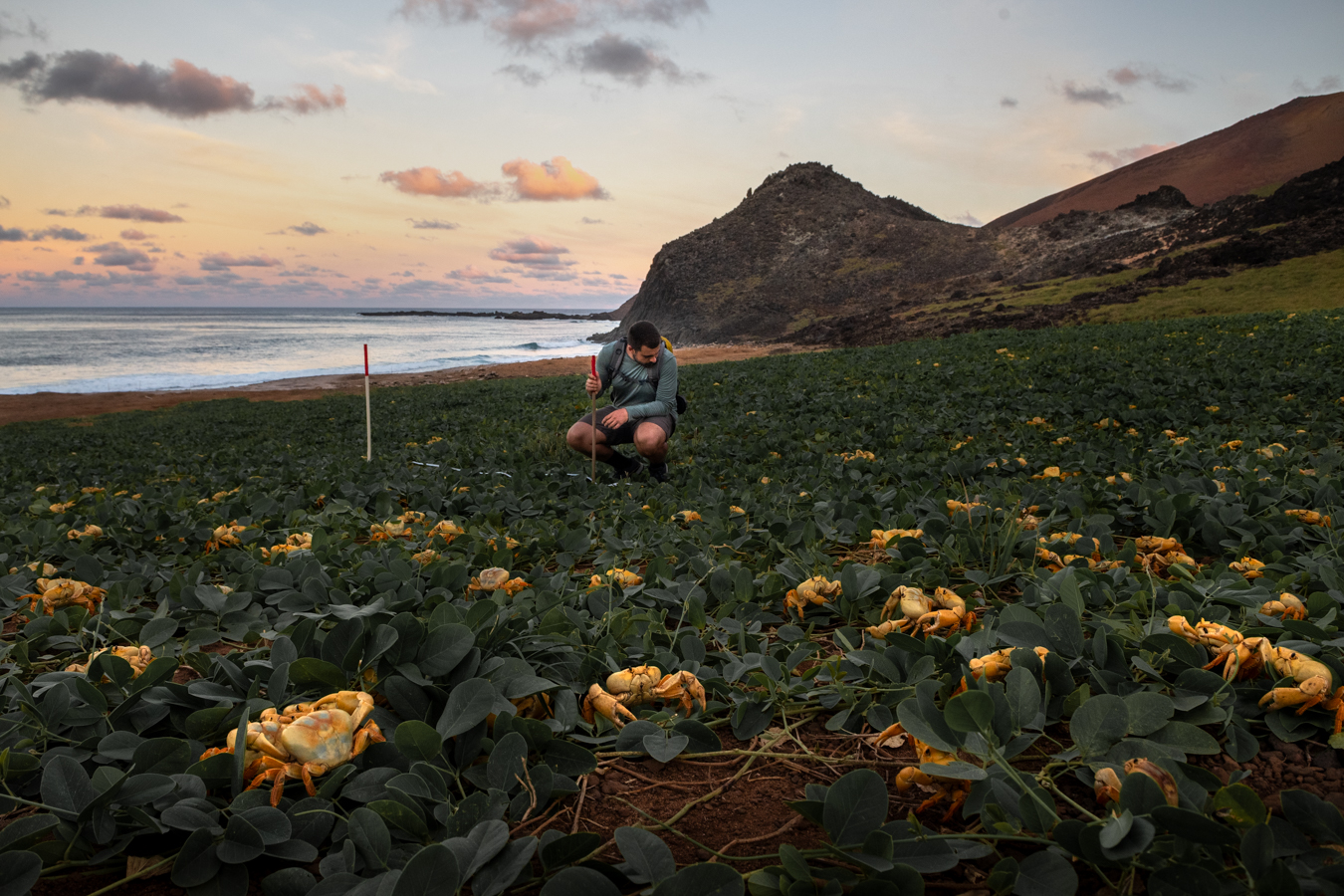
Crab Garden
As the sun sets, vegetation near the beach becomes bustling crab gardens. Hundreds of crabs emerge from their burrows, clustering around the plants. This species, with a marine larval stage and terrestrial adult phase, migrates seasonally for reproduction.
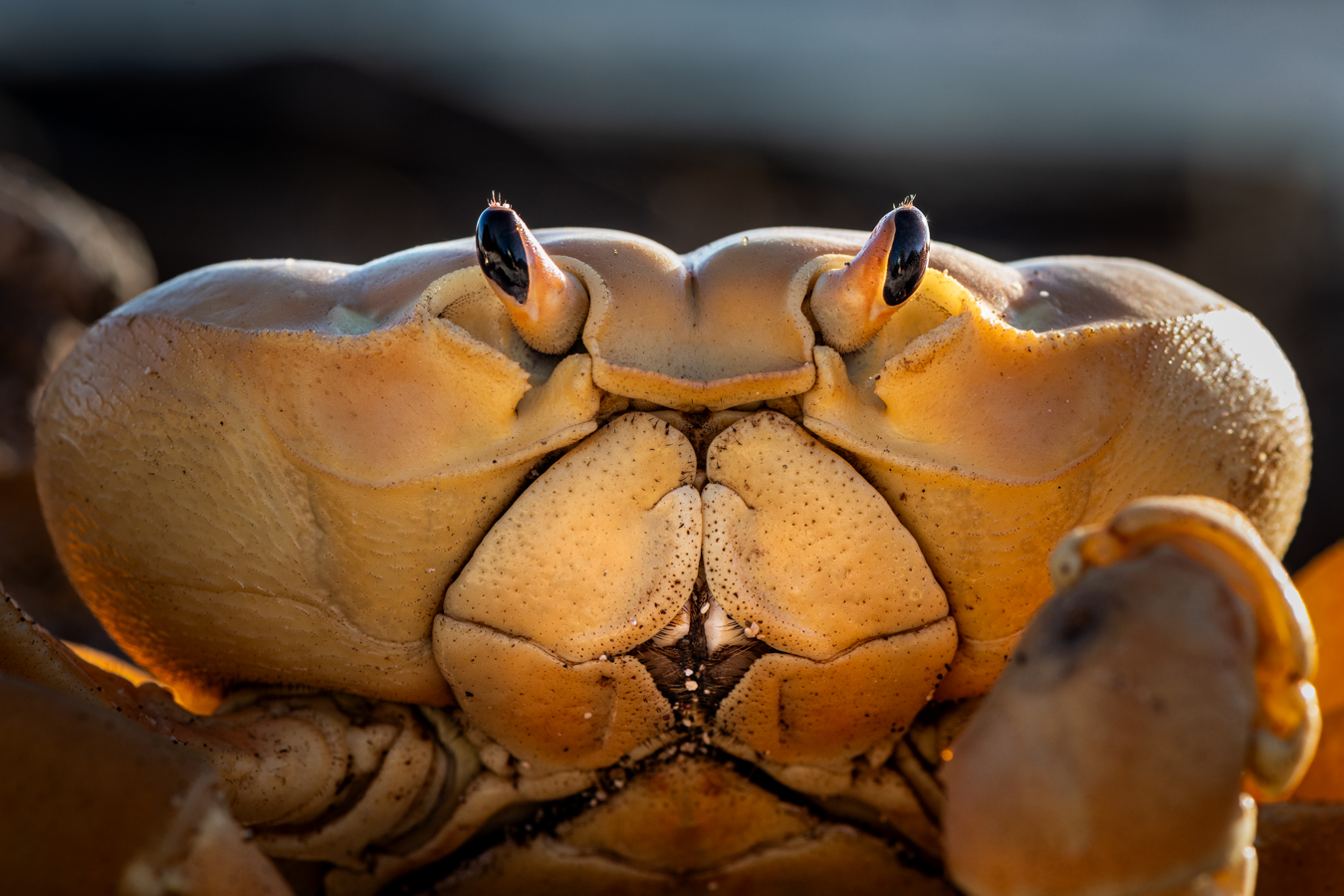
John Up Close
Individuals may exhibit yellow, purple, or black colors, likely due to neutral selection. Current research aims to understand the genetic connectivity among populations on the four islands where the species exists: Trindade, Fernando de Noronha, Rocas Atoll, and Ascension Island.

Turtles and Crabs
A green sea turtle (Chelonia mydas) digs a nest on Andrada Beach while yellow land crabs wait to feed on the eggs. Trindade hosts Brazil’s highest green turtle nesting density. Red lights were used to avoid disturbing the turtles.
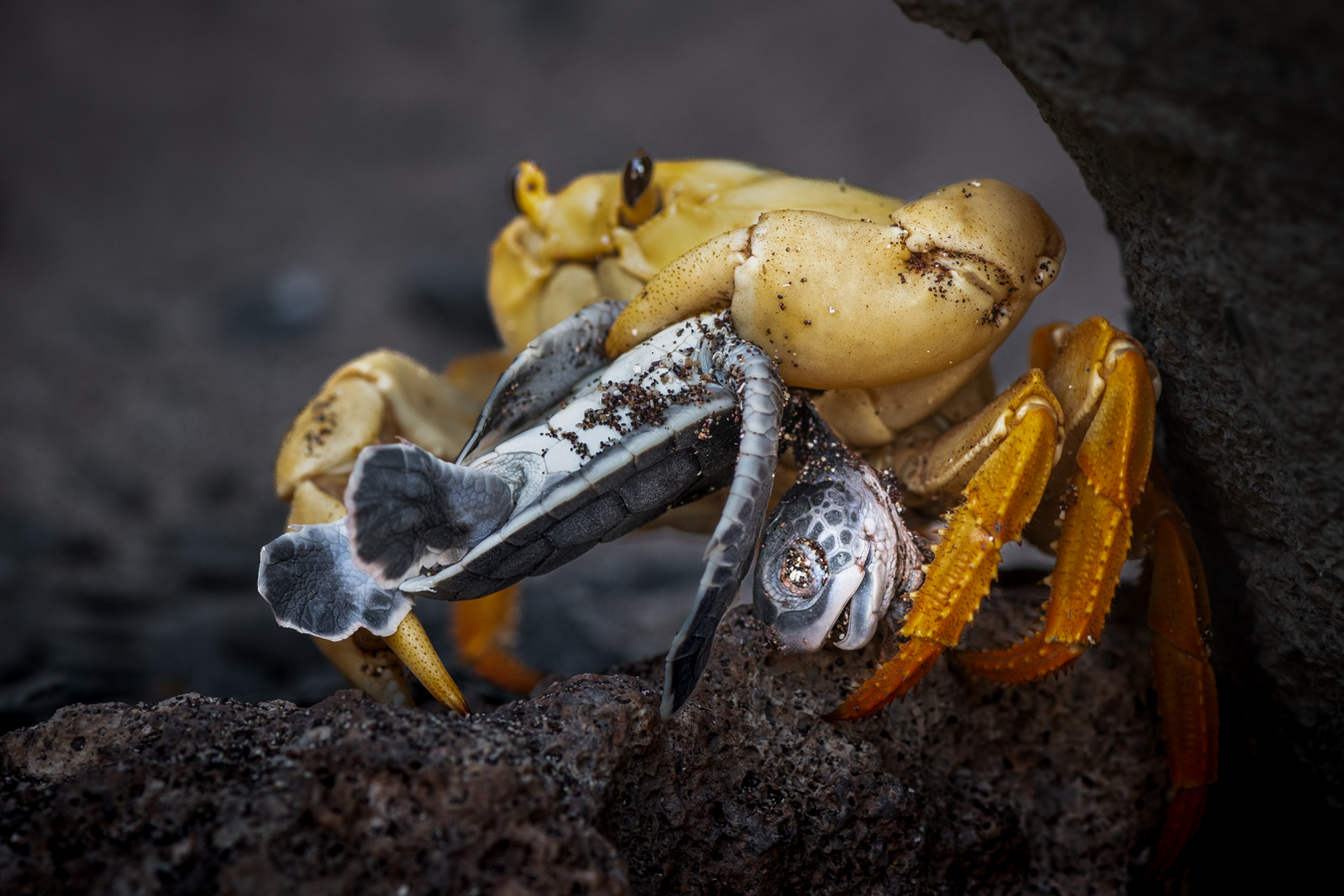
Hunter and Hatchling
During green turtle nesting on Trindade Island, yellow land crabs surround the sites at night and in the morning. Despite being predominantly herbivores, they also present opportunistic food behaviors, feeding on carcasses, turtle eggshells, and hatchlings.
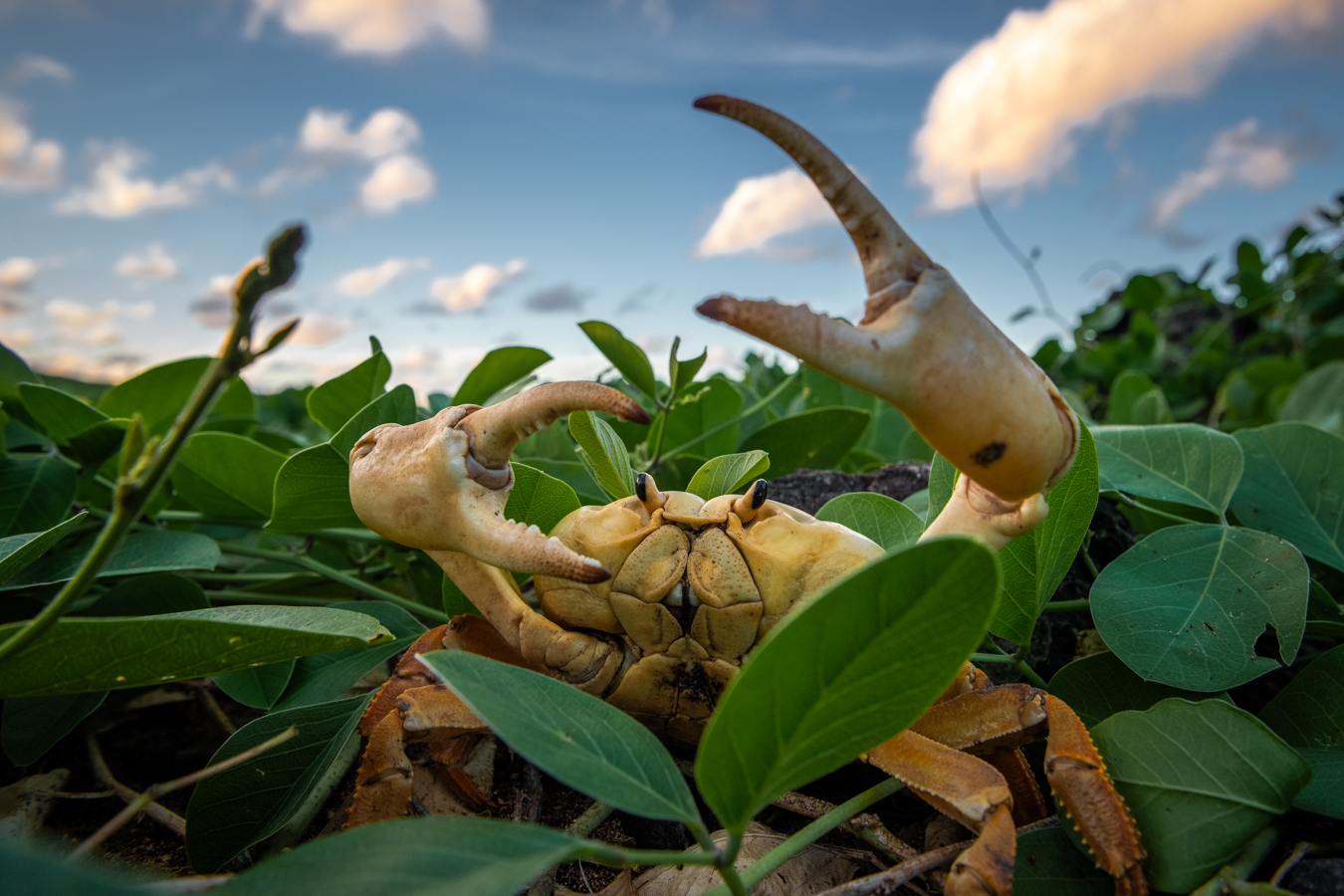
Facing Endangerment
Despite not yet being listed in the IUCN’s official Red List, it was considered to be in the Endangered (EN) category by researchers in Brazilian territory. Andradas Beach emerged as the primary reproductive site on Trindade Island, where egg-carrying females were exclusively found.

